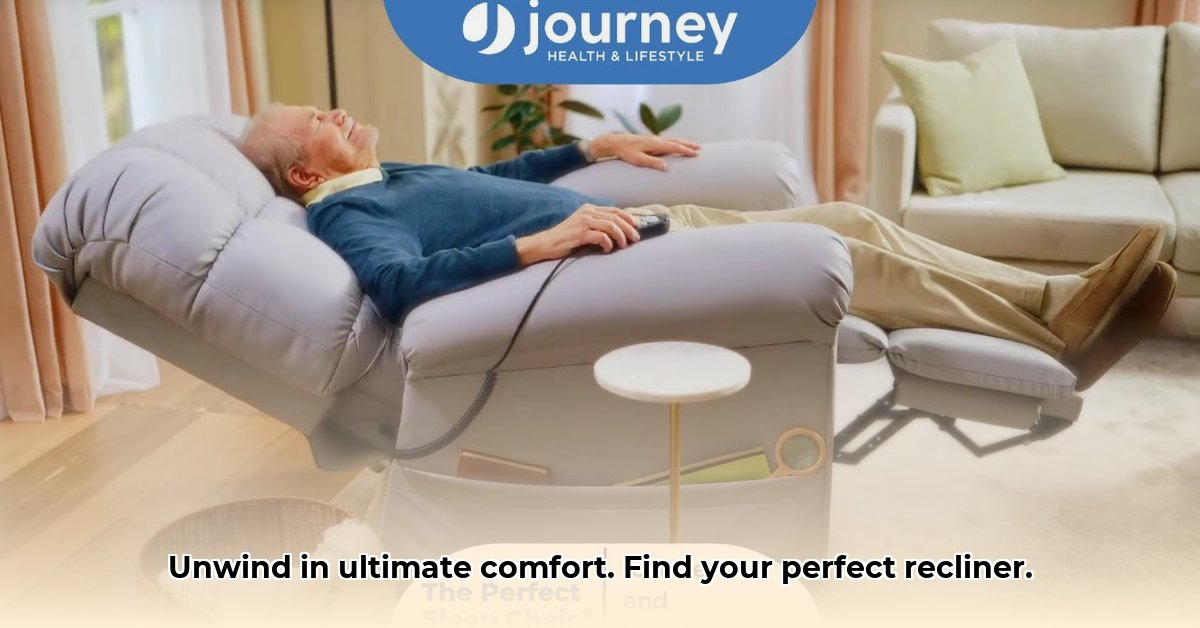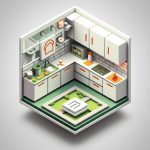Picking out a recliner sleeper chair can be tricky! There are tons of choices out there, all with different features and prices. This guide is here to help you find the perfect one, whether you need help getting up, want a super comfy place to nap, or just need something that saves space. We’ll walk you through everything you need to know: figuring out what’s important to you, understanding all those confusing features, setting a budget that works, and finding some top-rated chairs. We’ll even give you tips on how to keep your chair in great shape for years to come. Let’s get started and find your dream recliner!
Recliner Sleeper Chair: Your Ultimate Guide to Comfort and Convenience
Finding the perfect recliner sleeper chair can feel like navigating a maze. But don’t worry, we’re here to guide you through the process, making it easy to choose the ideal chair for your lifestyle and budget. This isn’t just about choosing a piece of furniture; it’s about investing in comfort, relaxation, and maybe even a better night’s sleep. Let’s explore the essential features and understand how to choose ideal recliners for restful sleep and relaxation.
Understanding Your Needs: Let’s Get Personal
Before you even start browsing, let’s figure out what you truly need from your recliner sleeper chair. Think of this next part as a quick self-assessment. Honest answers will lead you to the perfect match.
- What’s this chair’s main job? Will it be your nightly relaxation sanctuary? A comfy spot for daytime naps? Or will it primarily serve as extra sleeping space for guests? Perhaps you need assistance getting up, and a lift chair is a must. Knowing the primary purpose will drastically narrow your options.
- What’s your spending limit? Setting a realistic budget is crucial. Recliner sleeper chairs range from budget-friendly options to luxury models. This will help filter choices immediately and avoid sticker shock later.
- How important is a fully flat recline? Is a completely flat sleeping surface a dealbreaker? Or would a near-flat position work just as well? Some chairs achieve nearly flat, maximizing comfort without fully sacrificing the recliner function. Consider if a slight incline might be beneficial for certain medical conditions.
- How much room do you have? Grab your measuring tape! Measure the available space carefully, accounting for how the chair will recline. A slightly too-large chair can become incredibly frustrating. Don’t forget to account for the space needed to comfortably walk around the chair when it is fully reclined.
- What kind of upholstery are you after? Leather is durable and classic, but can get warm and isn’t always the most comfortable for sleeping. Fabric options, like microfiber or linen, are often softer and more breathable, potentially leading to a better night’s rest. Consider your lifestyle and preferences! Think about cleaning too – leather is generally easier to wipe clean. Do you have pets? Certain fabrics are more resistant to pet hair and scratches.
- Do you need a lift mechanism? If you or someone in your home has mobility challenges, a lift chair can significantly improve independence and ease of use. These chairs assist you in standing up from a seated position. Consider the weight capacity of the lift mechanism to ensure it meets your needs.
Key Features: Understanding the Details
Choosing a recliner sleeper chair involves more than just aesthetics. Let’s explore the key features and what makes them important:
- Upholstery: The fabric or leather covering your chair impacts both comfort and durability. Linen and microfiber are known for their breathability, making them suitable for sleeping. Leather is more durable and easier to clean but might feel less comfortable for extended periods. Consider stain resistance, especially if you have children or pets.
- Dimensions: The overall size is very important. Larger chairs, especially with a deep seat, often provide better sleeping comfort. However, always double-check measurements against your available space to ensure a comfortable fit. Room to maneuver around the chair matters too! Pay attention to the chair’s width, depth, and height, both when upright and fully reclined.
- Comfort Systems: The internal construction significantly affects your comfort. High-density foam, supportive springs, or even memory foam can make a huge difference in your seating and sleeping experience. Look for models with cushioning built to last. Research the different types of foam and spring systems to find what suits your preferences.
- Recline Mechanisms: Power recliners offer smooth, effortless recline adjustments at the touch of a button. Manual recliners, while often cheaper, require you to manually operate the reclining mechanism, which might be a concern for some. Consider the range of recline offered by each mechanism; some power recliners offer infinite positions.
- Lift Mechanisms (for Lift Chairs): For individuals with mobility limitations, a lift mechanism is essential. Assess the chair’s lift capacity (weight it can lift) and the ease of operation; some mechanisms are smoother than others. Look for certifications that ensure the lift mechanism meets safety standards.
- Frame Construction: A solid wood frame, ideally hardwood, provides greater stability and longevity. Metal frames are also durable, but ensure they are rust-resistant.
- Additional Features: Some recliners offer added conveniences like built-in USB charging ports, cup holders, side pockets for storage, and even massage or heat functions. Consider which of these extras would enhance your experience.
| Feature | Pros | Cons |
|---|---|---|
| Power Recline | Effortless adjustment, precise positioning | Often more expensive, potential for mechanical issues, requires a power source |
| Manual Recline | More affordable, simple mechanics | Requires physical effort to recline and return, fewer recline position options |
| Fabric Upholstery | Breathable, often softer and more comfortable, wider variety of colors and patterns | May require more frequent cleaning and may wear faster, can stain more easily |
| Leather Upholstery | Durable, easy to clean, luxurious look and feel, resists stains well | Less breathable, might feel too warm in warmer climates, can be more expensive |
Budgeting for Your Relaxation: Value and Features
The price of recliner sleeper chairs varies widely. Budget options (under $500) might compromise on comfort, materials, and longevity. Mid-range choices ($500-$1500) offer a better balance of features and quality, striking a middle ground between budget and high-end. High-end models ($1500+) usually excel in comfort, durability, and often include advanced features. Consider factors like warranty and customer support when evaluating the overall value.
Top Recommendations (with Cautions)
Instead of a simple “best of” list, let’s look at options categorized by need:
- Best for Mobility: Search for models explicitly designed for ease of use and with a reliable lift mechanism. Features like remote controls and smooth lift actions are essential here. Look for models with certifications from organizations like RESNA (Rehabilitation Engineering and Assistive Technology Society of North America).
- Best for Small Spaces: Look for compact models with space-saving designs. Pay close attention to the dimensions, especially the overall length when fully reclined. Wall-hugger recliners are designed to take up less space when reclined.
- Best for Luxury: Splurge on high-end models featuring premium materials, advanced comfort systems, and additional features. Expect to pay more for lasting quality and enhanced comfort. Consider features like motorized headrests, adjustable lumbar support, and integrated sound systems.
- Best for Back Pain: Look for models with excellent lumbar support and adjustable firmness. Memory foam cushioning can conform to your body and alleviate pressure points. Consider recliners with heat and massage features to soothe aching muscles.
(Please note that specific product names are intentionally omitted to promote an objective review. We recommend researching individual models based on the features discussed above and checking customer reviews before making a purchase.)
Maintaining Your Investment: Simple Care Tips
Regular maintenance will extend the lifespan of your recliner sleeper chair. Spot-clean any spills promptly. Vacuum regularly to keep the upholstery clean and free of dust and debris. Refer to the manufacturer’s instructions for detailed cleaning guidelines specific to your chair’s materials. A small investment in care translates to years of comfortable relaxation. Use appropriate cleaning products for your upholstery type; avoid harsh chemicals that can damage the fabric or leather. Consider investing in a fabric protector to prevent stains.
Finding the Best Recliner for Sleeping with Sleep Apnea
- Recliners can significantly improve sleep comfort, especially for those with sleep apnea.
- Features like power lift assist and adjustable recline angles are vital.
- Breathable fabrics are preferable to leather for nighttime use allowing for better airflow.
- Consider your budget, space constraints, and desired features before purchasing to make an informed decision.
- Thorough research and reading reviews are crucial for informed decision-making when buying a recliner.
1. Understanding Your Needs: A Personalized Checklist
Before diving into models, let’s assess your individual needs. Answer these questions honestly:
- What’s your budget? (This impacts material choices and available features.)
- Do you need a power lift assist? (Essential for mobility issues.)
- How much space do you have? (Size
- Glass Backsplash: Ideas For a Stylish Kitchen Update - December 2, 2025
- Glass On Tile: A Stylish Kitchen Backsplash Option - December 1, 2025
- Glass Tiles for Kitchen: Style and Durability Tips - November 30, 2025










